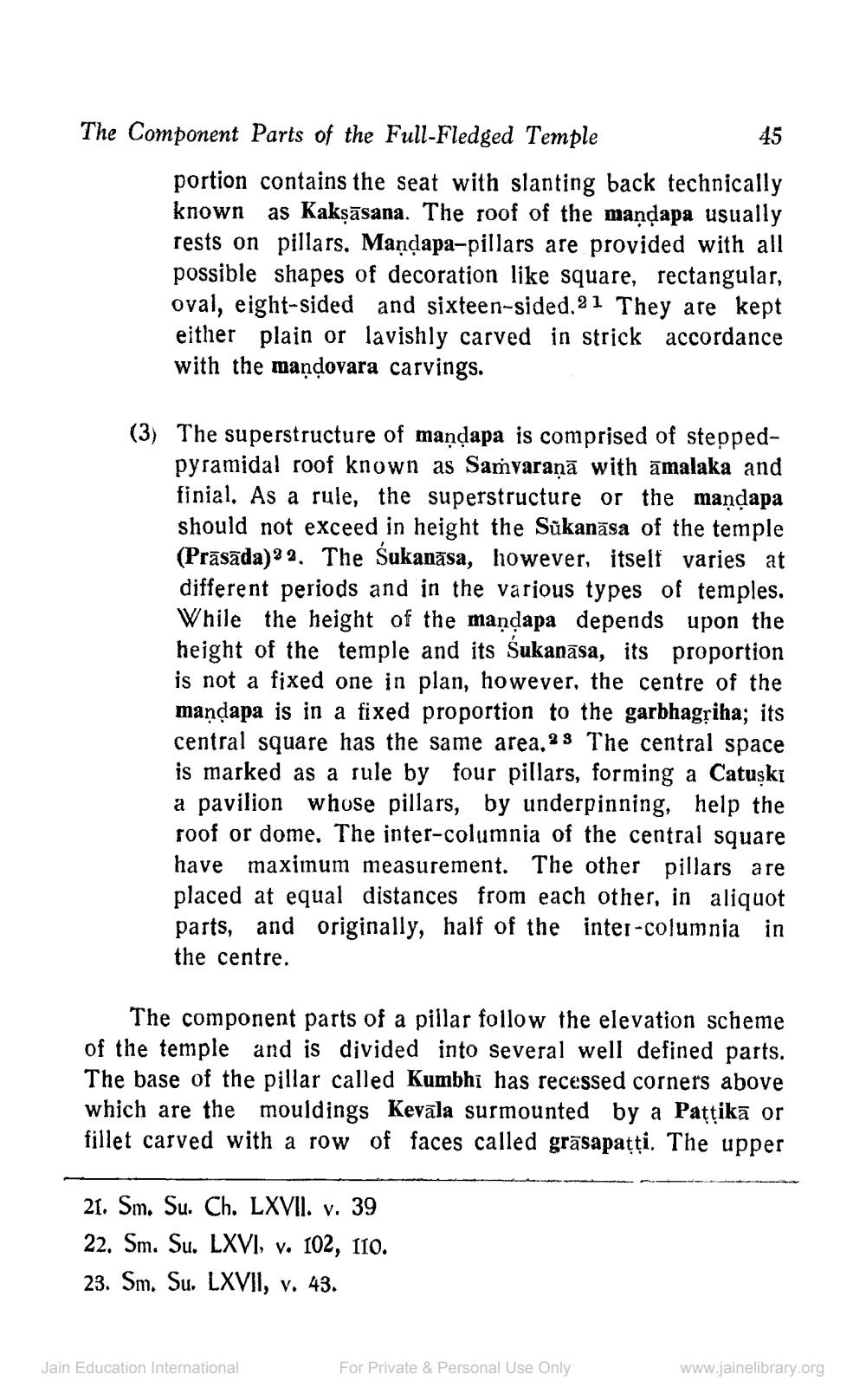________________
The Component Parts of the Full-Fledged Temple
45
portion contains the seat with slanting back technically known as Kaksāsana. The roof of the manqapa usually rests on pillars. Mandapa-pillars are provided with all possible shapes of decoration like square, rectangular, oval, eight-sided and sixteen-sided.21 They are kept either plain or lavishly carved in strick accordance with the mandovara carvings.
(3) The superstructure of mandapa is comprised of stepped
pyramidal roof known as Samvaraņā with āmalaka and finial. As a rule, the superstructure or the mandapa should not exceed in height the Sūkanāsa of the temple (Prāsāda)2. The Sukanāsa, however, itself varies at different periods and in the various types of temples. While the height of the maņdapa depends upon the height of the temple and its Sukanāsa, its proportion is not a fixed one in plan, however, the centre of the maņdapa is in a fixed proportion to the garbhagriha; its central square has the same area.2 s The central space is marked as a rule by four pillars, forming a Catuski a pavilion whose pillars, by underpinning, help the roof or dome. The inter-columnia of the central square have maximum measurement. The other pillars are placed at equal distances from each other, in aliquot parts, and originally, half of the inter-columnia in the centre.
The component parts of a pillar follow the elevation scheme of the temple and is divided into several well defined parts. The base of the pillar called Kumbhi has recessed corners above which are the mouldings Kevāla surmounted by a Pațţikā or fillet carved with a row of faces called grāsapatti. The upper
21. Sm. Su. Ch. LXVII. v. 39 22. Sm. Su. LXVI, v. 102, 110. 23. Sm. Su. LXVII, v. 43.
Jain Education International
For Private & Personal Use Only
www.jainelibrary.org




